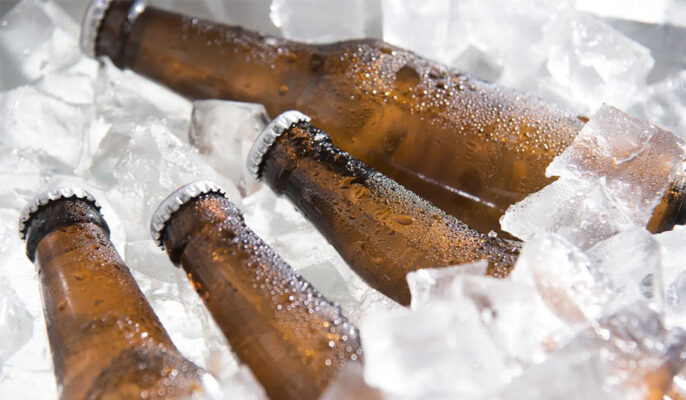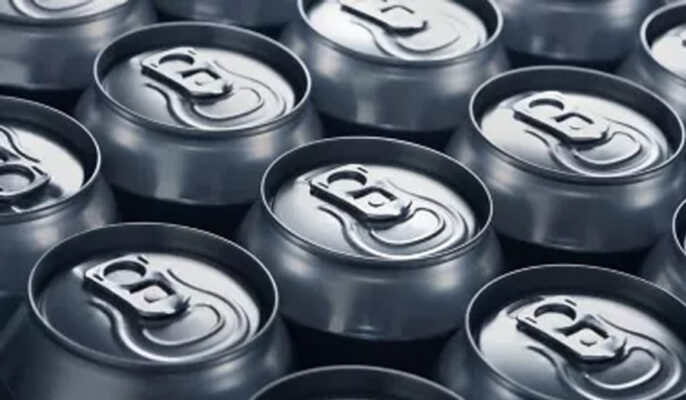I microbirrifici stanno diventando sempre più popolari nel mercato odierno e molti imprenditori stanno valutando come scegliere il giusto metodo di confezionamento per la loro attività. Tra questi, le bottiglie e le lattine sono le due opzioni principali. I birrai e gli amanti della birra hanno opinioni diverse sull'opportunità di utilizzare lattine o bottiglie per conservare le loro birre preferite. Questo articolo vi risponderà se le bottiglie sono adatte ai microbirrifici o se sono più adatte le lattine.
Imballaggio della birra
Prima di addentrarci nei dettagli dell'imbottigliamento e del kegging, è importante capire l'importanza di confezionare correttamente la birra. L'imballaggio serve a diversi scopi, tra cui proteggere la birra dall'ossigeno, garantire una carbonazione costante e mantenere l'integrità del sapore.
Il confezionamento della birra è molto più che metterla in un contenitore: è una fase critica del processo di produzione che può avere un impatto significativo sul prodotto finale. Il giusto packaging può migliorare l'esperienza complessiva del consumatore e aiutare la vostra birra a distinguersi in un mercato competitivo.

Che cos'è l'imbottigliamento in birreria?
L'imbottigliamento della birra si riferisce al processo di confezionamento e vendita della birra in bottiglie di vetro. Questo metodo di confezionamento è molto diffuso nell'industria della birra. Al termine del processo di produzione della birra, esistono diverse opzioni per il confezionamento della birra. Queste includono il confezionamento della birra in singole bottiglie, la loro tappatura o chiusura con tappi di sughero e la successiva sigillatura per mantenere una freschezza ottimale.
L'imbottigliamento della birra può utilizzare bottiglie di varie forme e dimensioni. Dalle classiche bottiglie a collo lungo alle esclusive bottiglie con tappo a vite, ogni contenitore ha un'estetica e funzioni diverse. I produttori di birra spesso scelgono tipi di bottiglie specifici per migliorare l'aspetto della birra e soddisfare le preferenze dei diversi consumatori.
Che cos'è l'inscatolamento in birreria?
L'inscatolamento della birra si riferisce al processo di confezionamento e vendita della birra in lattine di metallo (solitamente di alluminio). Questo metodo di confezionamento sta diventando sempre più comune nell'industria della birra, soprattutto per la rapida evoluzione del mercato dei consumatori e per la convenienza delle confezioni. L'industria della birra utilizza solitamente lattine di alluminio come contenitori per il confezionamento. Queste lattine possono avere capacità diverse, come 330 ml, 355 ml o 473 ml, ecc. a seconda della domanda del mercato e delle preferenze dei consumatori.
La birra in lattina è più buona di quella in bottiglia?
Non c'è niente di meglio di una birra fresca alla spina del bar o della birreria locale. Ma per quelle volte in cui non avete accesso alla birra pronta e avete bisogno di confezionarla, ci sono argomentazioni logiche che dimostrano che le lattine di alluminio sono la scelta migliore per preservare la qualità della birra. La birra in lattina blocca tutti i raggi UV, riducendo notevolmente la probabilità che la birra vada a male (con un sapore leggermente alterato). Il vetro lascia entrare la luce, che può scomporre alcuni composti del luppolo e modificare il sapore della birra, trasformando una IPA tropicale in una lager più blanda. La birra in lattina, inoltre, tiene lontano l'ossigeno perché è completamente sigillata. A volte l'ossigeno può entrare durante il processo di imbottigliamento e questo può portare a un'ossidazione eccessiva, dando alla birra un sapore di cartone (non il nostro sapore preferito).
Le bottiglie di vetro mantengono la birra al fresco più a lungo, ma questo significa che la birra in bottiglia è più buona? L'Huffington Post ha sperimentato quattro diverse marche di birra: Budweiser, Heineken, Sierra Nevada e Sapporo, sia in lattina che in bottiglia. L'obiettivo dell'esperimento era servire le birre in boccali in modo che nessuno sapesse quale fosse. Gli assaggiatori hanno confrontato le birre, indovinando quale pensavano fosse la versione in lattina e quale preferivano. I risultati hanno mostrato che gli assaggiatori hanno preferito le birre in lattina per 3 birre su 4, e 54% degli assaggiatori hanno identificato correttamente le birre in lattina.
Birra in bottiglia
Vantaggi
- Immagine del marchio: Le bottiglie di vetro sono spesso considerate un simbolo di alta gamma e di garanzia di qualità, il che contribuisce a migliorare l'immagine del vostro marchio.
- Freschezza: Le bottiglie di vetro possono proteggere meglio il gusto e la freschezza della birra, soprattutto per i prodotti che devono essere conservati a lungo o trasportati su lunghe distanze.
- Vantaggi ambientali: Le bottiglie di vetro possono essere riutilizzate o riciclate, con effetti di protezione ambientale migliori rispetto ad altri materiali.
- Accettazione del mercato: I consumatori hanno un'elevata accettazione e preferenza per la birra in bottiglia, soprattutto nel mercato di fascia alta e in quello dei regali.
Svantaggi
- Costo elevato: Le bottiglie di vetro sono costose da produrre e trasportare, il che può aumentare i costi di produzione.
- Fragilità: Rispetto ad altri metodi di imballaggio, le bottiglie di vetro hanno maggiori probabilità di rompersi durante il trasporto o l'uso.
Birra in scatola
Vantaggi
- Efficienza dei costi: Le lattine di plastica o di alluminio sono solitamente più economiche delle bottiglie di vetro, il che può ridurre i costi di produzione e di trasporto.
- Leggera e facile da trasportare: La birra in lattina è più leggera e facile da trasportare e conservare, soprattutto per le attività all'aperto e i grandi raduni.
- Durata: Rispetto alle bottiglie di vetro, la birra in lattina ha meno probabilità di rompersi ed è più sicura da trasportare e maneggiare.
- Popolarità del mercato: La birra in lattina ha una popolarità e un'accettazione più ampie, soprattutto nel mercato dei consumatori in rapida evoluzione e nei supermercati al dettaglio.
Svantaggi
- Problemi ambientali: Le lattine di plastica possono avere un impatto maggiore sull'ambiente e l'attuale tasso di riciclaggio non è elevato.
- Immagine del marchio: Alcuni consumatori possono pensare che la birra in lattina non sia di fascia alta come quella in bottiglia, il che influisce sull'immagine del marchio e sul posizionamento sul mercato.
Costi delle attrezzature per l'imbottigliamento e l'inscatolamento
Attrezzatura per il riempimento della birra I costi sono un fattore importante da considerare per i birrifici. Poiché la tecnologia delle linee di imbottigliamento è stata perfezionata nel corso di centinaia di anni, esistono molte opzioni di attrezzature tra cui scegliere. Poiché le bottiglie dominano da tempo il mercato, i produttori devono affrontare una maggiore concorrenza, mentre i produttori di birra beneficiano di prezzi più bassi.
Sebbene la birra in lattina esista da decenni, un gran numero di piccoli birrifici artigianali ha iniziato a passare alle lattine, il che ha provocato un'impennata dei prezzi della birra. Le linee di inscatolamento costano molto di più di quelle di imbottigliamento, ma richiedono meno operatori umani.
L'imbottigliamento richiede complessivamente più tempo e manodopera, ma il costo iniziale delle attrezzature è molto più basso. Per i piccoli birrifici che devono iniziare con fondi limitati, una linea di imbottigliamento a riempimento manuale è l'opzione più conveniente.
Molti piccoli birrifici iniziano con una piccola linea di imbottigliamento manuale perché il costo iniziale è inferiore, per poi investire in una linea di inscatolamento quando i profitti lo consentono. È anche possibile iniziare con una piccola linea di imbottigliamento o di inscatolamento e poi aggiornarla nel tempo. Alcuni sistemi sono più facili da aggiornare di altri e per modificarli possono essere necessarie soluzioni personalizzate.

Microbirrifici: Bottiglie o lattine
Differenze di sapore
Non c'è alcuna differenza qualitativa di gusto tra la birra in lattina e quella in bottiglia. I consumatori sono fortemente influenzati da nozioni preconcette sulla qualità che non vengono confermate dai test. Il gusto non è un fattore di qualità che differisce tra i due metodi di confezionamento.
Qualità della conservazione
La birra in lattina ha un leggero vantaggio quando si tratta di preservarne la freschezza. Gli elementi più dannosi per la birra sono la luce e l'ossigeno. Se la birra è esposta a una quantità eccessiva di ossigeno all'interno del contenitore, sviluppa uno sgradevole odore di muffa che i clienti noteranno immediatamente.
I barattoli di alluminio sono sigillati con uno spazio di testa il più ridotto possibile per ridurre al minimo il potenziale di degradazione dovuto all'ossigeno.
Le linee di imbottigliamento automatizzate pongono tipicamente le bottiglie sotto getti d'acqua ad alta pressione per schiumare la birra, che scaccia l'ossigeno e lo sostituisce con l'anidride carbonica. Il sistema chiude poi la bottiglia prima che l'aria abbia la possibilità di rientrarvi. Molti birrifici di piccole e medie dimensioni riempiono le bottiglie manualmente utilizzando una testa di riempimento a contropressione, che inietta la birra gassata direttamente nella bottiglia pressurizzata, riducendo al minimo la perdita di anidride carbonica.
Preferenze dei consumatori
La birra in lattina sta diventando sempre più popolare, poiché un numero sempre maggiore di produttori ritiene che le lattine siano il modo migliore per confezionare la birra. Nel 2008, 56% della birra prodotta e venduta negli Stati Uniti era in lattina. Nel 2018, questo numero è salito a 62%. Gran parte della birra in lattina proviene da grandi birrifici che vendono la birra a casse, ma i produttori artigianali stanno conquistando una quota crescente del mercato della birra in lattina.
Fattori da considerare
- Mercato di riferimento: Quale metodo di confezionamento preferisce il vostro gruppo target di consumatori?
- Esigenze di trasporto e conservazione: Il vostro prodotto deve essere conservato a lungo o spedito su lunghe distanze?
- Posizionamento del marchio: L'immagine del vostro marchio e il suo posizionamento sul mercato sono più incentrati sull'alto livello e sulla tradizione, oppure più giovani, innovativi e convenienti?
L'utilizzo di bottiglie o lattine presenta vantaggi unici e scenari applicabili. La decisione finale deve basarsi sulle esigenze aziendali, sul mercato di riferimento e sulla strategia del marchio, per garantire che il metodo di confezionamento scelto possa massimizzare le vendite e lo sviluppo del mercato.




